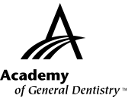|
Exercise No. 343
Subject Code: 017
Dental Materials
The 15 questions for this exercise are based on the article, Comparative study of the fluorescence intensity of dental composites and human teeth submitted to artificial aging, on pages 37-41. This exercise was developed by Daniel S. Geare, DMD, in association with the General Dentistry Self-Instruction committee.
|
Reading the article and successfully completing the exercise will enable you to understand:
- how artificial aging affects composite fluorescence;
- the difference in fluorescence between composite brands; and
- the physical nature of fluorescence.
|

